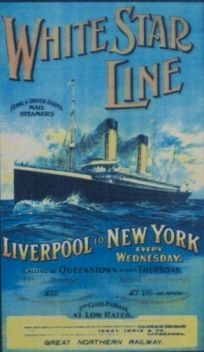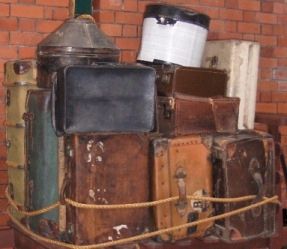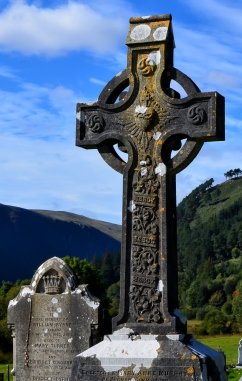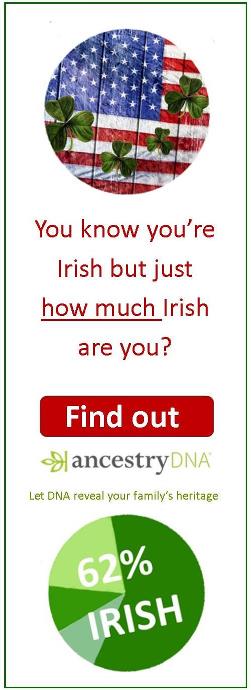- Home ›
- Irish emigration ›
- US immigration records
US immigration records
US immigration records exist in many forms. Which is just as well, because there is no single complete list detailing individual Irish immigrants to America over the last three or four centuries.

Only in the last 100 or so years have US immigration records been more systematically collected, and even then, they do not necessarily lay bare useful genealogical information. The all-important townland or parish of origin in Ireland is frequently omitted.
So you will need to cast your net wide.
You'll need to check every available resource where your ancestor may be listed. And don't limit your research to direct ancestors. It is possible that the clues to your Irish immigrant's place of origin, his/her parents' names or other vital data was recorded only by another family member and that information may be recorded in just one document.
Your job, if you really want to progress your Irish family history research, is to uncover it.
More ideas and help with finding the place of origin of your Irish ancestry.
Below are the principal US resources for finding details of Irish immigrants in America. See box for links.
US immigration records: ships passenger lists
Up to 1st January 1820, masters of ships were not legally obliged to present their ship's passenger lists to US officials, so US immigration records from this early period are scarce. However, two Pre-1820 Lists are available on microfilm at the National Archives in Washington:
- Arrivals at New Orleans 1813-1819
- Arrivals at Philadelphia 1800-1819.
Other pre-1820 records can be found in a number of books detailing extracts and transcriptions from the 16th century.
Customs Passenger Lists date from 1820 and are held by the National Archives in Washington. Collected from both small and major ports, these lists are, in practice, of limited genealogical use because only the country of origin is recorded. Also, no index is available so they are difficult to use if you do not know a fairly precise date of immigration.
Immigration Passenger Lists date from 1883 are also held by the National Archives in Washington. They cover the major ports and many smaller ones such as Mobile, New Orleans, and New Bedford. Again, no index is available, but the detail includes the last place of residence - sometimes the immigrant's family home - is recorded.
Some of these lists are available at Ancestry (also see New York section below).
Irish immigration to New York: passenger lists
Although several ports of entry were available to ships leaving Ireland (and Liverpool in England), the vast majority of Irish immigrants to America arrived in New York.
Ancestry has passenger lists for the port of New York from 1820 to 1891. Those dating from 1851 are easier to search and have the most information. If you identify an ancestor in the index, you can discover the exact date of arrival, the name of the ship, and the names, ages, and occupations of those who sailed with him/her.

Unfortunately, though, they provide only two clues relating to the origin of the emigrant - the port of departure of the ship and the nationality of the passenger. This is of limited value when it is realised that a huge proportion of Irish emigrants in the 19th century sailed from Liverpool (England). It was not until the Immigration Act of 1893 was introduced that the former address in Ireland was recorded.
Castle
Garden Passenger Arrival Records contain the details of about 10 million people who
passed through Castle Garden, America's first official immigration reception
centre. It opened in 1855 but the records (which are not complete) date from
1830 to 1892 and have been transcribed. At September 2023, the CastleGarden.org website is not functioning but the same records can be searched free at FamilySearch.
Ellis Island Passenger Arrival Records is an online database of 22 million passengers and crew members who went though Ellis Island, America's official immigration reception centre from 1892 to 1924. Even if you don't know when your Irish ancestors arrived, you should try this site first. It's free and contains digital images of ships' manifests and more.
Remember that familiar spellings of names may have changed or been recorded/transcribed differently.
USA Naturalisation records
Naturalisation is the legal procedure immigrants have to go through in some countries if they wish to enjoy the status of citizen of their new homeland. In the USA, naturalisation paperwork can provide the genealogist with a treasure trove of information about their immigrant ancestors, providing information not just about their life before leaving Ireland but also about their early years in America.
The history, laws and procedures of USA naturalisation are quite complicated so it is worth checking out the detailed overview on the Family Search Research Wiki. A vast collection of US naturalisation records is available at Ancestry.
US Census records
A census has been taken every ten years in the USA since 1790 but they contain limited information for genealogy research (except name and age of head of household) until 1850 when the returns include the country of of birth and age of all members of the household. Occasionally, additional information, such as county or town of birth, had been added by the enumerator.
Many state censuses also exist. These were generally taken between the federal censuses and contain similar infomration;
The 1880 census is free to view on FamilySearch.org, while Ancestry has returns up to and including 1950.
US Birth, Marriage & Death (BMD) records
The USA has no national civil registry of births, marriages and deaths. Such records are held locally, by either county or state.
The best sources of American vital records are listed on Cyndi's List. Many records are also becoming available at Ancestry.
To obtain birth, marrage and death records/certificates you have to apply in writing to the appropriate government department. You'll find addresses here.


If your Irish ancestor married in the States, the marriage certificate may identify where the bride and groom were born and perhaps their ages. Parents' names are often listed, too, which can sometimes provide the breakthrough your family history research needs.
Although the quality of information held on death certificates varies according to where they were filed, they may give the exact birth date, the age in years and the birthplace.
The latter may be recorded as 'Ireland' (if you're unlucky), or the county. If you're very lucky, the name of the parish or townland may be recorded.
US Military Records
Army records can be a valuable source of information about Irish immigrants to America, even if they did not join the army themselves. There's a host of them, including military service records, pension applications and draft registration cards.
Civil War: Military pensions were claimed
by soldiers, their widows and their children. They can include many details
about families, including birth and marriage dates and locations. Importantly,
the name of the county or precise townland is often stated. Fold 3, Ancestry's sister database that specialises in military records, has a huge Civil War collection of more than 100 million records.
Pension
files for Confederate soldiers are held for the states of Alabama, Arkansas, Florida, Georgia, Kentucky, Louisiana,
Mississippi, Missouri, North Carolina, Oklahoma, South Carolina, Tennessee,
Texas and Virginia. Details.
First World War registration cards: More than 24 million draft cards for men born between 1872 and 1900 survive. They have been indexed and can be searched at Ancestry. They include the date and location of birth of the soldier, plus the birthplace of the soldier's father.



